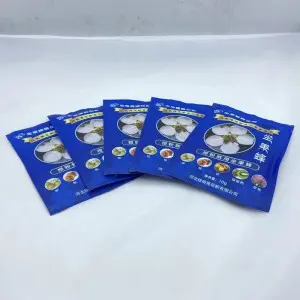ਦਸੰ. . 05, 2024 08:14 Back to list
Methods for Fruit Bagging to Enhance Guava Quality and Yield
Fruit Bagging in Guava Production Enhancing Quality and Yield
Guava (Psidium guajava) is a popular tropical fruit renowned for its delightful flavor, nutritional benefits, and high market demand. However, like many fruits, guava is susceptible to various pests and diseases that can adversely affect its quality and yield. One effective strategy employed by guava growers to protect their crops and enhance fruit quality is the practice of fruit bagging. This article will explore the advantages of fruit bagging in guava production, the methods involved, and its impact on the overall yield.
Understanding Fruit Bagging
Fruit bagging involves covering developing guava fruits with bags made from various materials such as polypropylene, paper, or cloth. The primary goal of this practice is to create a physical barrier that safeguards the fruit from pests, diseases, and environmental stressors. Bagging is particularly important in regions where guava cultivation faces intense pest pressure, such as fruit flies and fungal diseases.
Advantages of Fruit Bagging
1. Pest and Disease Management One of the most significant advantages of fruit bagging is the protection it offers against pests and diseases. By covering the fruit, growers can minimize the risk of infestations and infections. This is especially crucial during the fruit's early development stages, where damage can severely impact growth and yield.
2. Improved Fruit Quality Bagging not only protects fruits from pests but also from environmental factors such as sunlight, rain, and extreme temperatures. This minimizes blemishes, sunburns, and other quality-related issues, leading to an overall increase in fruit quality. Bagged fruits often exhibit better color, size, and taste, making them more appealing to consumers.
3. Reduction in Chemical Use With effective pest management through bagging, the need for chemical pesticides can be significantly reduced. This not only lowers production costs for farmers but also leads to healthier fruit for consumers. Reduced pesticide application aligns with sustainable farming practices, promoting environmental health.
4. Enhanced Market Value Guavas that are high in quality and free from blemishes command better prices in the market. Fruit bagging can lead to increased profits for growers, making their investment in this labor-intensive practice worthwhile.
fruit bagging in guava product

Methodology of Fruit Bagging
The process of fruit bagging in guava is relatively straightforward but requires careful timing and execution to maximize its benefits
1. Timing The bags should be placed on the fruit soon after the fruit sets. Early bagging is crucial as it offers maximum protection from pests while minimizing any potential impact on fruit development.
2. Choosing the Right Bags Growers can choose from various materials for bagging. Polypropylene bags are popular due to their durability and resistance to weather conditions. However, biodegradable options are gaining traction among environmentally conscious growers.
3. Securing the Bags It is essential to ensure that the bags are securely fastened to prevent them from being dislodged by wind or rain. Proper sealing will also help in maintaining good ventilation, preventing the buildup of excess moisture, which could lead to fungal growth.
4. Monitoring After bagging, periodic monitoring is essential to check for any signs of pests or diseases and to ensure that the bags remain intact.
Conclusion
Fruit bagging in guava production is a valuable agricultural practice that addresses many challenges faced by fruit growers. By protecting the fruit from pests and diseases while ensuring high quality and reducing chemical inputs, bagging can lead to improved yields and greater profitability. As the demand for high-quality, sustainably produced fruits continues to rise, practices such as fruit bagging will likely play an increasingly important role in the future of guava cultivation. For growers looking to enhance their guava production, embracing fruit bagging could be a game-changing strategy that pays off in both quality and economic returns.
-
High-Quality Apple Tree Pollen for Sale - Boost Your Harvest!
NewsAug.25,2025
-
Pure Plant Pollen: Optimize Pollination & Boost Yields
NewsAug.24,2025
-
Pure Plum Tree Pollen for Sale - Optimal Pollination
NewsAug.22,2025
-
Apple Tree Pollen for Sale: Boost Orchard Yields!
NewsAug.21,2025
-
Premium Cherry Pollen: Essential for Pure Pollination
NewsAug.19,2025
-
Pollen Peach Tree: Pure Pollination for Bountiful Harvests
NewsAug.18,2025